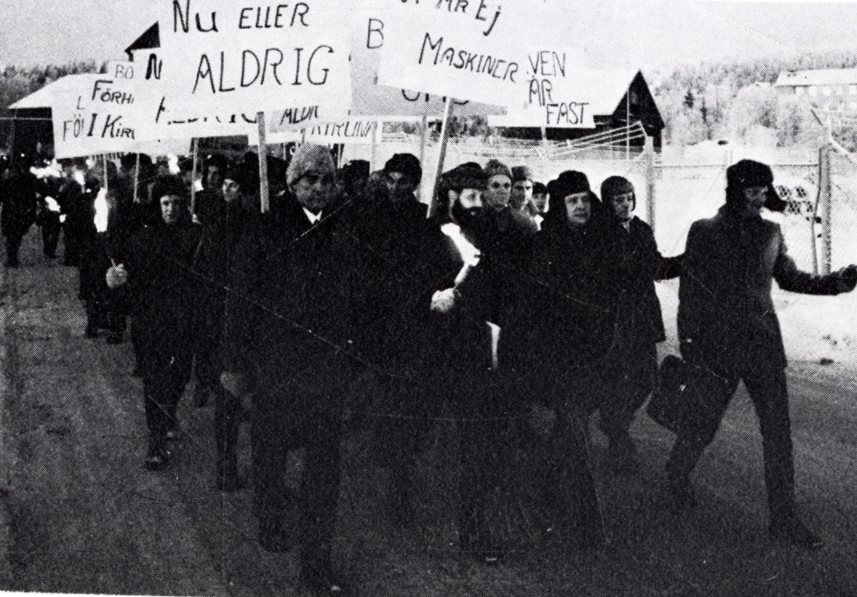50 years ago, Swedish miners at the state-owned company LKAB went on a mighty wildcat strike. This cut right through the propaganda about Sweden as a country of polite class collaboration. The miners inspired workers up and down the country to take up the struggle for better working conditions, in a wave of spontaneous strikes that spread like wildfire. This is the story of the great miners’ strike.
Read the original in Swedish |
“We are feeling locked out, insulted, alienated, reprimanded, controlled, weighed and measured, in short we feel as if time is passing us by without giving us access to a meaningful social existence, where the work could be the most valuable part. Right now it is seen as a necessary evil. Our whole existence could be more humane.
“It’s not a plastic boat, a freezer or a bar cabinet that I’m missing… It’s the fact that I, that we, all my friends, all workers in Sweden are excluded from society. We’re unfree. Uneducated. Powerless”. (Thoughts from two workers in Sara Lidman’s and Odd Uhrbom’s book Gruva, published 1968)
When the morning shift, 35-man strong, at the Leveäniemi mine in Svappavaara, downed tools on Tuesday 9 December 1969, they started what would become a 57-day miners’ strike in the far-north mining area Malmfälten. The next day, the strike completely engulfed Svappavaara, and the strike began also in Kiruna. On Thursday, the strike spread to Malmberget, and soon there was an all-out strike at LKAB, including the workers at the ore port in Luleå.
The miners’ strike in Malmfälten in the winter 1969–70 is an important milestone in the Swedish working-class’ history. What was the cause? How did the company bosses act? How did the representatives of the labour and union movements act? How did the leadership of the strike act? And most importantly: what can the class fighters of today learn from the strike?
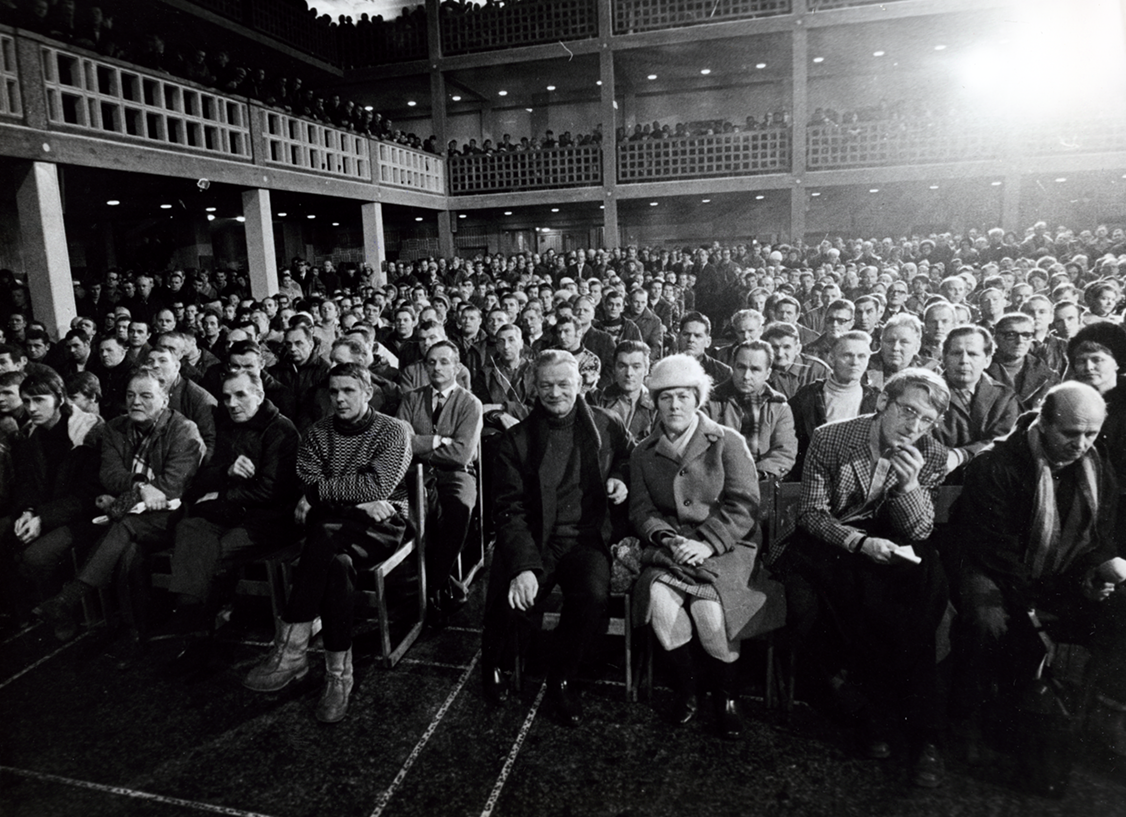
Increasing pressure
LKAB was for a long time jointly owned by Grängesbergsbolaget and the state, though the state’ influence over the company was very limited. But from 1 October 1957, LKAB was made completely state-owned.
The new company was, according to the Social Democratic government’s proposition (№ 171/1957), to be run “according to businesslike principles” and the management should be given “as much freedom of action as possible”. This was the go-ahead for extensive rationalisation and for the implementation of new measures to increase the “efficiency” of LKAB with the objective of – just like any other capitalist company – maximising profit and securing dividends for the shareholders, in this case Statsföretag AB. But that required that the workers’ wages were held back, which in itself required a harsher policy in regards to the personnel. For example, in 1960-62, punch-clocks were introduced against the workers’ will. This also meant a stricter control of how the workers performed their work. Warnings of dismissal and suspension became increasingly common. This was a big factor in how the strike developed to something much more than just an isolated sit-down strike.
At the time of the strike in 1969, LKAB was the biggest iron ore exporting company in the world. In terms of productivity it was considered one of the leading companies in the world. The new mine in Svappavaara, Leveäniemi, where the strike started, was especially productive: its productivity was calculated to be 50 percent higher than the productivity in Kiruna.
Since the state takeover in 1957, the production of LKAB had doubled, but the workforce had shrunk by 1,400 labourers, from 8,200 to 6,800 workers. Between 1967 and 1969, the production increased from 20 million to 28 million metric tonnes. The gross profits in 1969 were about 400 million kronor, which was about 40 percent of the revenue that year. The shareholders’ dividends were increased to 12 percent in 1968 after suffering a slight drop to 10 percent in 1967. This was still higher than the 8 percent that Volvo had in their “record-year” of 1969!
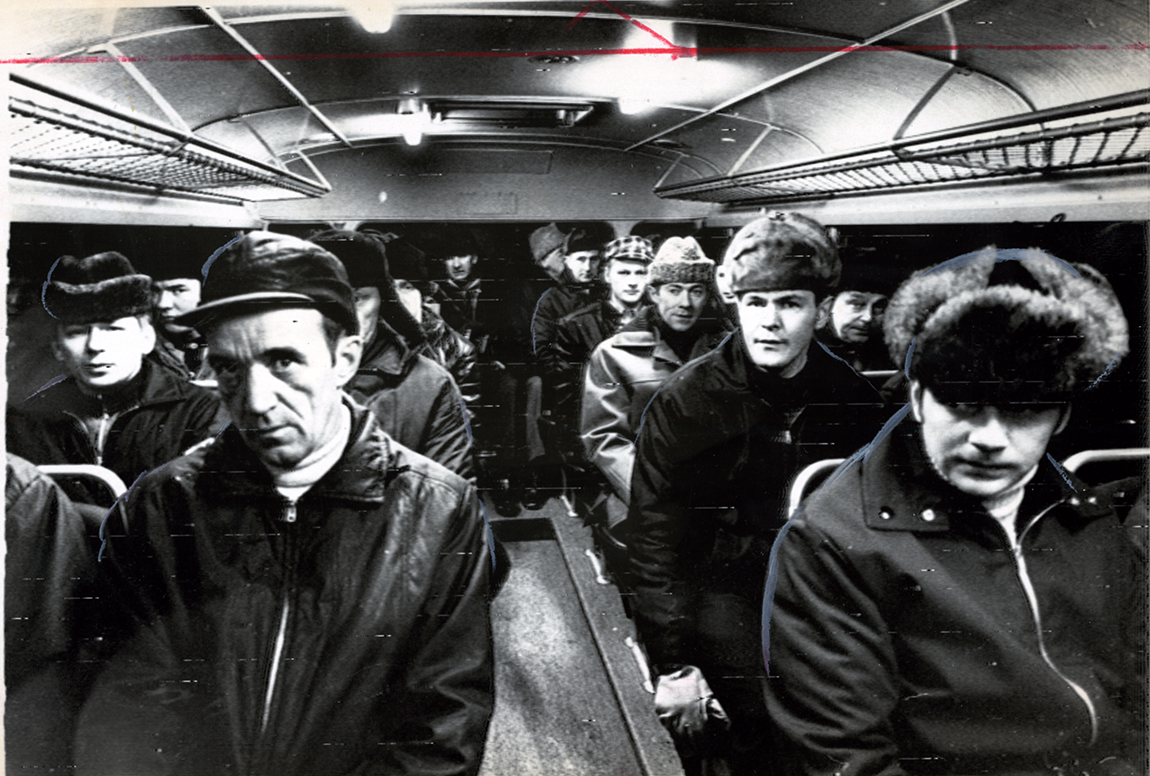
Stagnating wages
The miners had already for several years faced smaller wage increases than other industrial workers. Admittedly, their average wage was already higher than their comrades in other branches of industry. But nobody questioned that, on account of the heavy and strenuous underground mining work. If the national average wage for adult male industrial workers was set to 100, then the average wage of the miners between 1963 and 1969 had decreased from 121 to 116.
In Norrbotten it was particularly evident that the wages of the miners were lagging behind. Within the mining industry, the hourly rates increased by 2.90 kronor on average between 1963 and 1969, but in Norrbotten they only increased by 2.74 kronor on average (the national average increase for all industrial workers was 3.19 kronor). LKAB was also able to keep the wages down, in part due to the weak mine workers’ union, on whose leading body the miners in Malmfälten were badly under-represented – despite making up about half of their around 12,100 members.
The LKAB management planned to continue keeping the wages down. At a conference for the Swedish Employers’ Association, in the spring of 1968 the CEO, Arne S. Lundberg, said that he thought that “it is rather a question of trying to change the psychology to one of a... less rapid rate of wage increases than previous years”. The management anticipated resistance to their plans, but they counted on being able to continue as usual – and with the blessing of the mine workers’ union.
The workers in Svappavaara had worked to increase their piecework-rates to decent levels, but the rates were unilaterally abolished in the spring of 1968, without abolishing the previous agreement. After negotiations, the agreement was reached that the new rates would apply. LKAB, however, were not willing to retroactively give full compensation for the time, roughly 1,000 work-hours, that the workers had actually worked under the previous agreement.
LKAB’s ultimatum
In the spring of 1969 the management’s hard line continued towards the workers in Svappavaara. New rates were implemented for exactly those groups that would later initiate the strike in December. Three weeks before the strike, LKAB made an ultimatum saying that if the union did not accept the management’s offer, they would keep the old agreement, which would have been much worse.
In Kiruna and Malmberget, management had a similar hard line. In September, they succeeded in forcing through an agreement on new salaries and work-evaluations. The fixed part of the agreement was increased, while the variable part was decreased. Moreover, they added a so-called re-evaluation factor to the work-evaluation system, which would be applied to the variable part of the worker’s pay, different for different tasks. The company management, but also the majority within the union’s department boards, assured the workers that this would not mean any pay cuts. But it did – mainly in Kiruna, and especially for the workshop-workers. For many, this meant a pay cut of between one and two kronor an hour!
Loyalty to superiors
So what did the company’s management’s “positive” view of cooperation with employees and “collaboration” in the so-called corporate democracy look like? In late 1968, the “31 theses” became known by the public after a librarian in Kiruna got hold of and publicised them. They had been drafted by an American consultant, Kenning. These theses made it clear what opinions the management held about the employees and what role they considered the bosses’ role to be. Here are some examples:
The tasks of the employees and their place in the organisation “must be accepted as decided in the best interest of the company” (thesis 13). An “efficient leadership is to lead by governance and not by example” (thesis 15). A manager “must show complete loyalty to superiors” (thesis 17), “identifies himself with and supports every decision made within the company” (thesis 18), “must be ready to change opinion in support of a senior manager” (thesis 20) and “exercise their leadership so that non-managers only have to follow given orders” (thesis 29). It’s not hard to understand why so many clerks decided to support the strike!
There was a thorough debate concerning the theses. The social democratic government showed their stance on the issue when minister Krister Wickman, who had Statsföretag AB in his area of responsibility, in a parliamentary debate regarding the theses on 20 February 1969, said that it was “an irony of fate that LKAB of all companies have happened to come under scrutiny in regards to corporate democracy. I think you can say that LKAB is among the Swedish companies that have actually done the most when it comes to engaging the employees in questions regarding the company”. He was not alone in defending the theses. Nils Lindell, who at the time was chairman of the mine workers’ union, also defended the theses: “Most likely the choice of words has contributed to an overly undifferentiated mass media treatment, which has not been improved by a lack of insight into the contents of the text”, he said according to the April–May 1969 issue of the union paper Gruvarbetaren.
The work-evaluation system UMS had also been adopted. The abbreviation is short for Universal Maintenance Standards, but in the working-class humor it became “Utan Mat Snart” (Without Food Soon), “Ultra Modern Slavery” or “MUMS för arbetsgivaren” (YUMMY for the employer). It was a further development of the American job evaluation system, MTM (Method Time Measurement). This was cleverly translated by many workers to “Mindre Till Mat” (Less For Food). In truth, that was what it really was – a way to lower wages. It was based on dividing all manual labour into rudimentary movements, for example how long time it took for eye movements, leg and arm movements or lateral movements etc. All work was measured and this became the base from which the piece-rates were set. This system was first implemented in the workshops and it was consequentially the workers in the truck workshop in Svappavaara that started the strike.
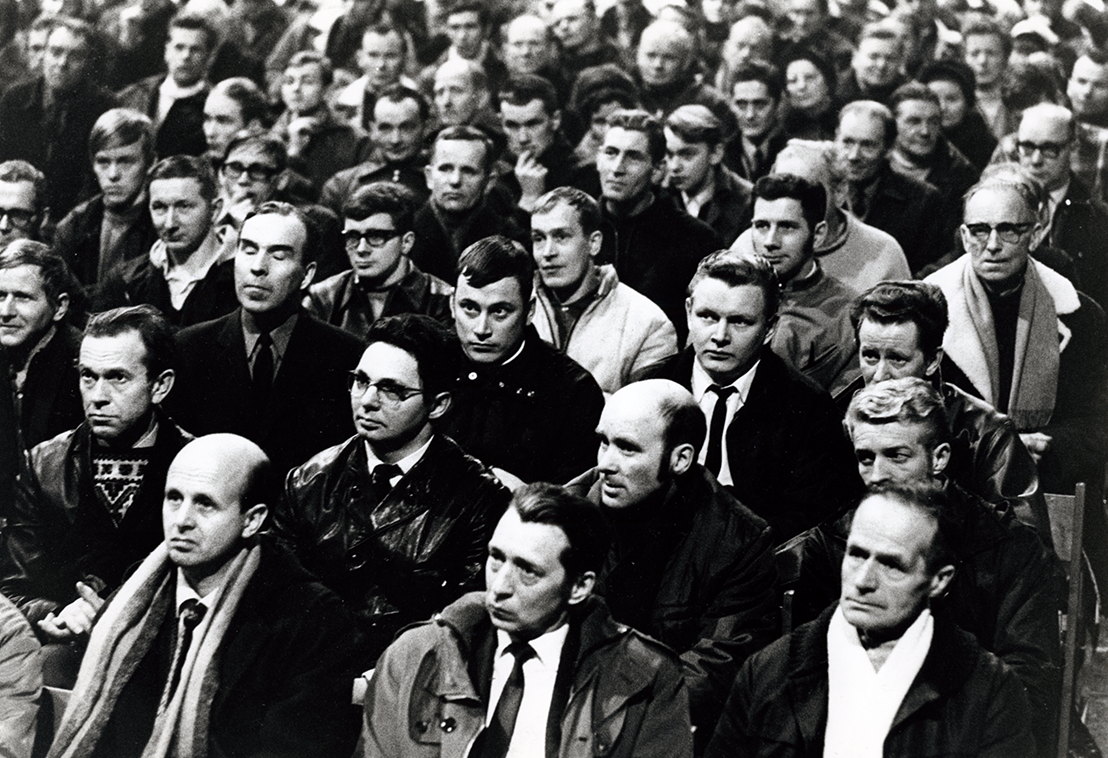
Social-Democratic majority
So what was the political situation like in Sweden by the end of the 1960s? In 1969, the Social Democratic leadership felt very confident, with a large support in the working class. The election of 1968 had given them the majority of seats in the parliament, with more than 50 percent of the vote. The Communist Party (now the Left Party), had only received 3 percent of the vote, largely due to the Soviet Union marching into Czechoslovakia just before the election.
In September 1969, Olof Palme became the new leader of the Social Democrats, and thereby also prime minister. Without a doubt he had a large support among the youth (including myself!), in no small part thanks to appearing very radical in his foreign policy, with his harsh critique of the US war in Vietnam.
It’s something of an irony of fate that the author Sara Lidman, in October 1967 travelled north for a meeting in Svappavaara, as a part of the United NLF Groups solidarity meetings across the country. Her mission was primarily to increase the support for the solidarity work for Vietnam, not to get the workers’ thoughts on the social developments in Sweden. But when she received a request to illustrate with text Odd Uhrbom’s photos of miners and their working environments for a book project, she accepted, and in December she went back and interviewed about 40 workers in Svappavaara and Kiruna. The result became the book Gruva (Mine). It became a first testament to the fact that “the Swedish Model”, with consensus between employer and employee, wasn’t so perfect as was solemnly proclaimed. It was also a premonition that the trust in the union leadership was faltering.
According to the book, one worker said that he “had started to wonder if the trade unions were really on the workers’ side. Sure, the board is elected. But it’s the union representative that is the top dog. And the federation. So we have no say”. Another worker said: “The trade union has no power. You can never go to the union with a complaint.” And another: “Sad to say, the trade union movement has lost the bigger perspective… The whole picture. The great camaraderie.”
Despite the dramatic development in France in 1968, the Swedish class struggle was still relatively calm. The Stalinist Soviet Union’s march into Czechoslovakia definitively put a damper on the radicalisation. But the contradictions within the workplaces started to make themselves felt, if only on a small scale. Someone who maybe had started to feel where the wind was blowing was Gunnar Sträng, at the time minister of finance. Yet, he toned down the issue in a speech at the Aros Congress Center in Västerås on 28 October:
“There’s no direct conflict of interest between society and business, but an objective observer must assert that most of the so-called conflicts are artificial… The good atmosphere prevailing between the sides of the labour market indicates that not everything is as bad as some want to portray it.”
Nobody knows what he must have thought when, shortly after, the dockworkers in Gothenburg started the most radical strike of the 1960s. The militancy of the strike, the fact that it was organised outside the established union, and that it went on for longer than normal, made it stand out from the previous strikes during the post-war period. But still, it was the later miners’ strike that definitively showed that the Swedish working-class struggle had entered a new phase. The strike was a real shock, not only to the employers, but also for the Social Democratic government and the trade union leadership. It demonstrated something completely different to the supposed “mutual interest” and class collaboration between labour and capital.
The spark
It was after receiving their pay slips on 5 December that the 35 workers in Svappavaara became the spark that ignited the wildfire on 9 December. They demanded 40 öre (0.40 krona) more per hour, which had been a demand in the previous negotiations. The next morning, LKAB threatened, through the chairman of the union, a lockout of the entire mine and to “mothball” it for several years! Later in the day, the threats were repeated by the union representative Rehnkvist. That was like pouring fuel on the fire! At 10.45 there was a complete strike in Svappavaara. During the next two days, the workers in Kiruna and Malmberget followed suit.
The first proper strike meeting was held in Kiruna on Thursday 11 December. It was the former Social Democrat and experienced trade union activist, Harry Holmlund, who on his own initiative booked the sports hall for a meeting regarding the strike.
The strike had, up to this moment, lacked real leadership, but now a strike committee of nine was elected. It consisted of both active and former Social Democrats, Communist Party members and non-party members – even a member of the liberal People’s Party! Most of them were older workers with a solid trade-union background.
The same evening, the strikers of Svappavaara elected their own strike committee of three. None of them had any political or trade union background.
On Friday 12 December, the strikers at Malmberget had their first strike meeting, where they also elected their strike committee of nine. This committee was dominated by members of the Communist Party, but a couple of them were “non-party”. One of them was a Social Democrat, but he was later replaced by a Communist Party member.
Criticism in the Social Democrats
At the strike meeting in Malmberget, approximately 2,000 workers participated. Simultaneously, the local mine workers’ union branch had a meeting. Only about 30 people attended! However, after the strike meeting, some more arrived. But there were still at most 90 people attending. The Social Democratic parliamentarian Karl-Erik Häll, previously the union representative at the local union branch before becoming a member of parliament in 1969, gave a speech about the Swedish Trade Union Confederation (LO) and Social Democratic Party’s joint programme regarding workers’ safety. It was met with complete silence. The critique was harsh against both LO and LKAB – even from leading local Social Democrats. For example, the chairman of the municipal council, a Social Democratic miner, even said that “he was ashamed when he heard Sträng”.
In Kiruna, there was also blistering criticism from local Social Democrats. At the Social Democratic union branch meeting on the evenings of 14 December, the members criticised their chairman sharply for having attacked the strikers a few days earlier. The critique towards the leadership of the trade union confederation was also particularly harsh. The meeting supported the strikers’ demands (except the demand for envoy Lundberg’s dismissal) – and it is worth noting that they also supported the idea that the Communist Party member Rantatalo should lead the negotiations. Some members even thought that it could be “good to have a communist” who might be “freer to lead a harder line”!
Most of the striking miners probably saw themselves as Social Democrats, even though the support for the Communist Party was large in Malmfälten, especially in Malmberget. But most of the leading Social Democrats were definitely not ready to accept a “communist” influence in the union. Ever since the miners’ strike of 1928 and their congress in 1929, there had been a fierce struggle against “communist infiltration” within the mine workers’ union, not least in Malmfälten.
The miners’ strike 1969-70 also provided an example of this. The chairman of the mine workers’ union at the time, Nils Lindell, had some health issues and the leadership of the confederation in Grängesberg was “reinforced” with the former chairman, Vilhelm Isaksson. He considered the conditions in LKAB to not have been insufferable, and thought that they could have negotiated in peace and quiet and managed to solve the “questionable… trifles”. He blamed the dissatisfaction on “communist agitators” who exploited a “mass hysteria” that had emerged. The strike was due to “agitation and mass psychosis”! Several times during the strike, accusations were made against the Communist Party members Rantatalo (who had been chairman in the Kiruna branch) and Hermansson (who was the current chairman in trade union branch in Malmberget) that they wanted revenge on the trade union confederation for not getting the union positions that they had applied for, which instead had gone to Social Democrats.
The acting chairman of the mine workers’ union, Bernt Nilsson, went to a strike meeting in Svappavaara to get the strikers to cancel the strike. He failed, and later spoke to the mass media about “powers” behind the strike and that many “are running errands for the Communists”. Maybe he meant people like the active Social Democrat who, at the strike meeting in Malmberget on 15 December, had said that they had two mighty organisations to fight against – the Swedish Trade Union Confederation and the Swedish Employers’ Association! It seems unlikely that he meant the anonymous leaflets distributed by mail in Malmberget, signed by “Social Democrats within the workers’ movement” claiming that the strike was “entirely political” and that “we, the rest of the workers, cannot accept that a strike committee divided by communists wants to stand above all laws that our fathers with blood, sweat and tears fought for”!
The Social-Democratic press
Another point of interest is how the media described and treated the strike. As the strike continued, the bourgeois media became increasingly critical. Above all, they took every opportunity to inflate the contradictions within the leadership of the strike. Aftonbladet, which in the late 60s could be considered to be slightly “left” within the Social Democratic press, had a cautious line in their editorial, but fully supported the Trade Union Confederation’s and the mine workers’ union’s position that it was the union that should do the negotiating, not the strike committee. It was mainly the “direct democracy” and the strike’s method of decision-making that was under scrutiny. Even here, there were insinuations of “party-political contradictions” within the leadership of the strike. But in conformity with the union confederation leadership they were also critical of how the leadership of mine workers’ union had acted, and critiqued their lack of support. But consistently the real message was: go back to work.
The worst attacks was made in the news section, in particular by Aftonbladet’s trade union reporter Kurt Bergström. He even launched the idea that Ture Rantatalo was a “agent of Moscow”. It was also this reporter that looked for all kinds of cracks within the strike leadership and designated them as party-political contradictions, between Social Democrats and Communists. When there were lay-offs, he of course quickly interpreted this as signs of the strike “faltering”. This naturally bolstered the attempts made by the trade union bureaucracy to attack the leadership of the strike.
In the beginning of February, people in the leadership of the mine workers’ union claimed that it wasn’t 5,000 miners that were behind the strike, but rather “a small group of communists and members of the Vietnam solidarity movement” that had used the mass hysteria to bolster their propaganda!
There are, however, no signs that the strike was anything but spontaneous. In the beginning it was completely devoid of leadership.
The former Social Democrat Elof Luspa, who also had been chairman of the Kiruna union branch in 1966–69, explained in an interview many years later:
“There was no communist inspiration to the strike. Not even remotely. The strike was carried out completely outside of their ranks and they had nothing to do with it.” (Ragnar Järhult. Nu eller aldrig. En bok om den “den nya strejkrörelsen”, Stockholm 1982)
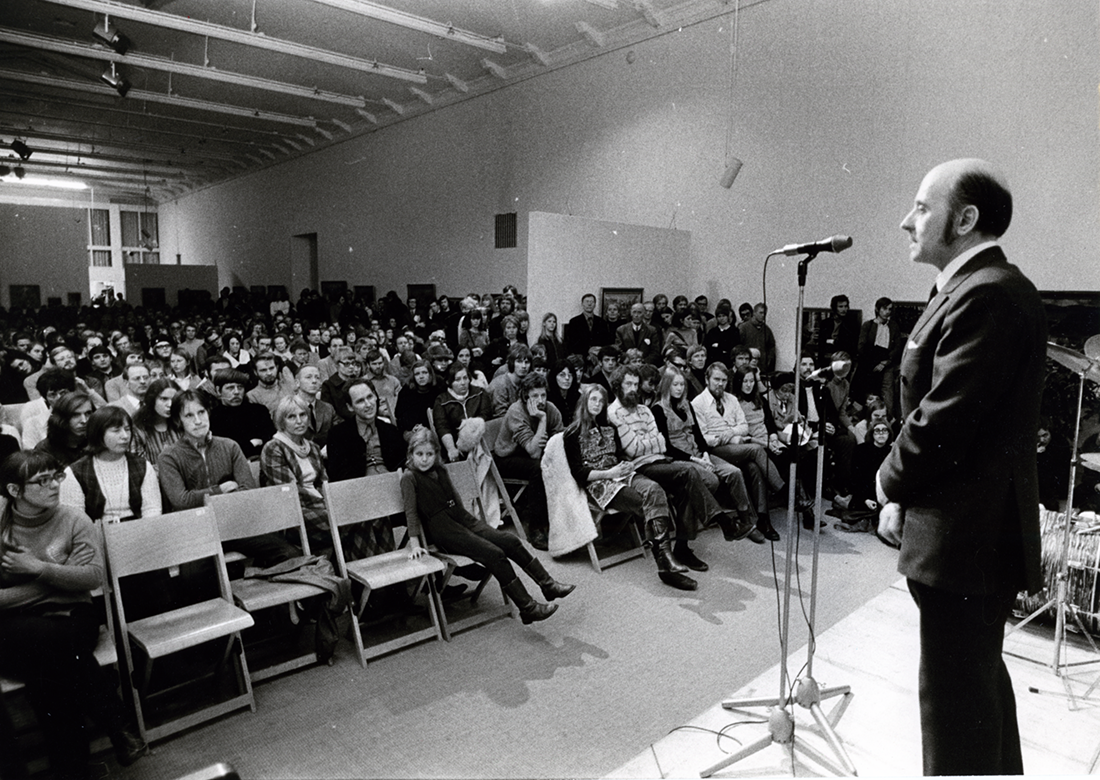
The strike leadership
Together, the 21 elected workers from Kiruna, Svappavaara and Malmberget formed the central 21-man committee. With this, the strike had been organised and granted a leadership. They agreed on the demand that the question of wages had to be negotiated before there would be a return to work. They demanded a monthly salary corresponding to 15 kronor per hour underground and 13.50 kronor above ground, which equated to a raise of about 24 percent. The re-evaluation factor was to be removed, and also UMS. LKAB was to leave the Swedish Employers’ Association. They also demanded wage supplements for older workers, recreational grants in line with the clerks, less overtime, better bus transport and an investigation into the risks associated with diesel fumes. Moreover, they demanded that the negotiations would be public.
But, as the 21-man committee were preparing for joint negotiations, the leadership of the LO and the mine workers’ union initiated separate negotiations regarding Svappavaara, even though it had been agreed that there would be no negotiations as long as the strike was ongoing! This can only be understood as an attempt to split the strike. The deal, made over the heads of the workers in this way, was put to the vote among the workers in Svappavaara. It was rejected with 141 votes against 5 (the votes of the local trade union board).
There’s no doubt that the strike had almost complete support from the strikers. However, it also had support among the rest of the population. At the demonstration in Kiruna on the Saturday 13 December, over 3,000 participated and in Malmberget over 2,000 marched (20 percent of the local population) with trade union banners and torches – making two impressive “Saint Lucy’s Day processions” (a traditional Swedish celebration)! Another demonstration was held in Kiruna on 16 December – this time with 5,000 participants! At the Kiruna branch’s informational meeting with a trade union confederation representative, about 800 of the striking workers arrived. The representative was told to leave Kiruna, the appeal to return to work was ignored and the meeting proclaimed their support for the strike committee, and not the local trade union board. The day after, there was a new demonstration in Malmberget – over 2,000 took part in the mass meeting afterwards. Even the local vicar in Malmberget wholeheartedly gave the strikers his support at the mass meeting!
The leadership of the trade union confederation LO and the mine workers’ union constantly tried to make the strikers return to work, while at the same time conceding that their demands were justified. But the chairman of the union, Arne Geijer, also tried to put the blame for the problems on the clerks, claiming that they had “fattened themselves at the workers’ expense” (at a press conference in Stockholm 18 December). On 21 December, the mine workers’ union sent their vice-chairman Kurt Nordgren in an attempt to influence the strike committee, but the committee held steady.
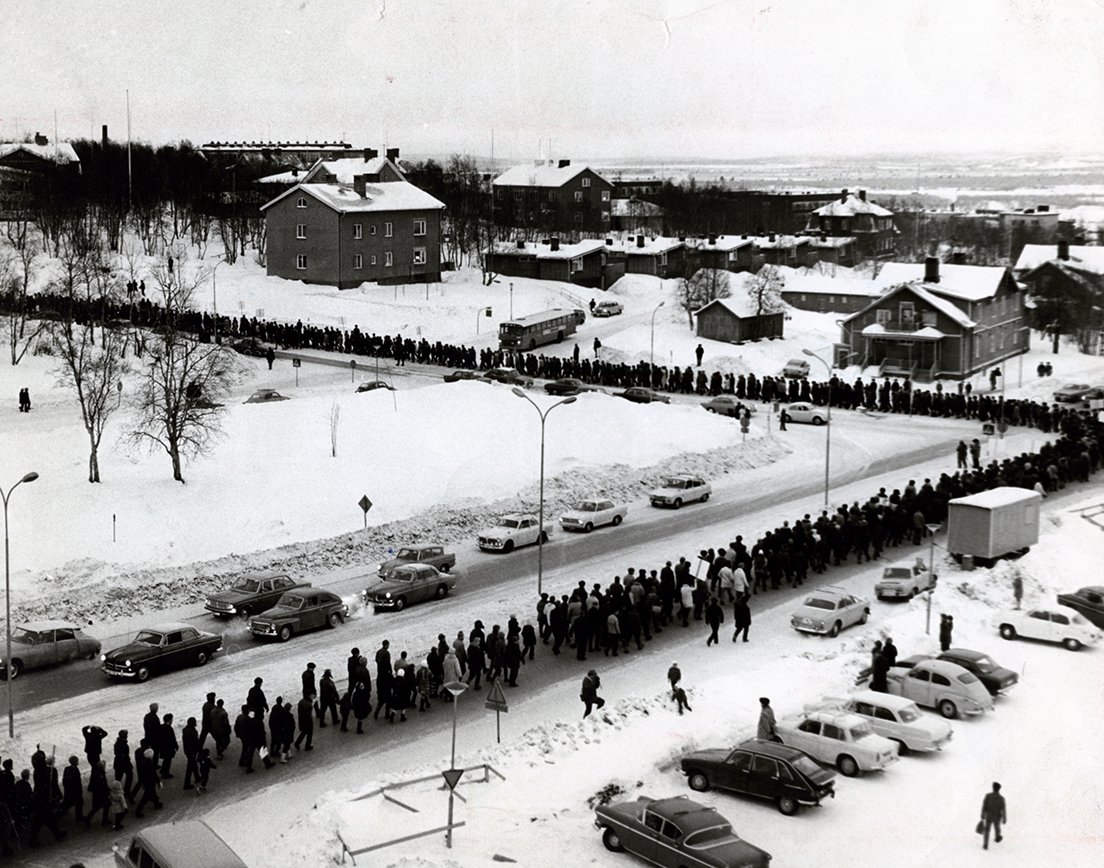
The strike committee extended
On 29 December, however, the strike committee made a proposal to form a delegation of 27, composed of the strike committee expanded with two delegates each from the board of the mine workers’ union’s branches in Kiruna and Malmberget, as well as the two union officials. As a result of the extensive criticism towards one of the officials, he was replaced with another representative from the federation, Anders Stendalen (who later would become the chairman of the federation). The strike leadership had by now also included the union representatives who so far had worked against the strike! This would cost them dearly. In the aforementioned interview, Elof Luspa explained:
“I think the 21-man committee was very good, until we took in the 6 union representatives. We should never have done that. It was they who crushed the strike. Slowly, but surely.”
LKAB’s board meeting in Stockholm on 7 January decided that no concessions would be given to the strikers. The next day, large strike rallies were held in both Kiruna and Malmberget. In Kiruna, almost 3,000 voted to continue the strike – only one voted against! The workers were standing strong, but cracks had started to appear within the leadership. At the new delegation’s meeting on 13 January, there was a vote. With 14 votes against 9, it was decided that the negotiations would continue to be based on what the strikers had decided at the rallies. Here, a crack was starting to form in the delegation’s unity. But the strikers were still in favour of continuing the strike.
The next attempt to split the strike came when the Social Democratic chairman in the Kiruna municipal council, Rolf Dahlström, proposed that Kurt Nordgren, the vice-chairman of LO, should also be included in the delegation. This proposal was backed by both of the local union boards, including the chairman in Malmberget, Ivar Hermansson of the Communist Party, and another member of the Communist Party, that is: two Communists who only two days earlier said that they joined the strike movement! One of the members of the strike committee in Malmberget, the non-party Harry Isaksson, later called Hermansson “that blockhead who never did anything when it came to fighting against LKAB. Enforcing discipline within the working class was an important task for him”. Hermansson was also in the leadership of the Communist Party and later even became a member of parliament.
Again, the proposal was rejected by the committee, this time with 12 votes against 9. However, it was now clear that the representatives from Kiruna didn’t represent the strikers. And in Malmberget, there was for the first time a minority: two members of the Communist Party arguing in favour of Nordgren. At both closed strike meetings in Kiruna and Malmberget, the proposal was rejected with a clear majority: 1,530 votes against 999.
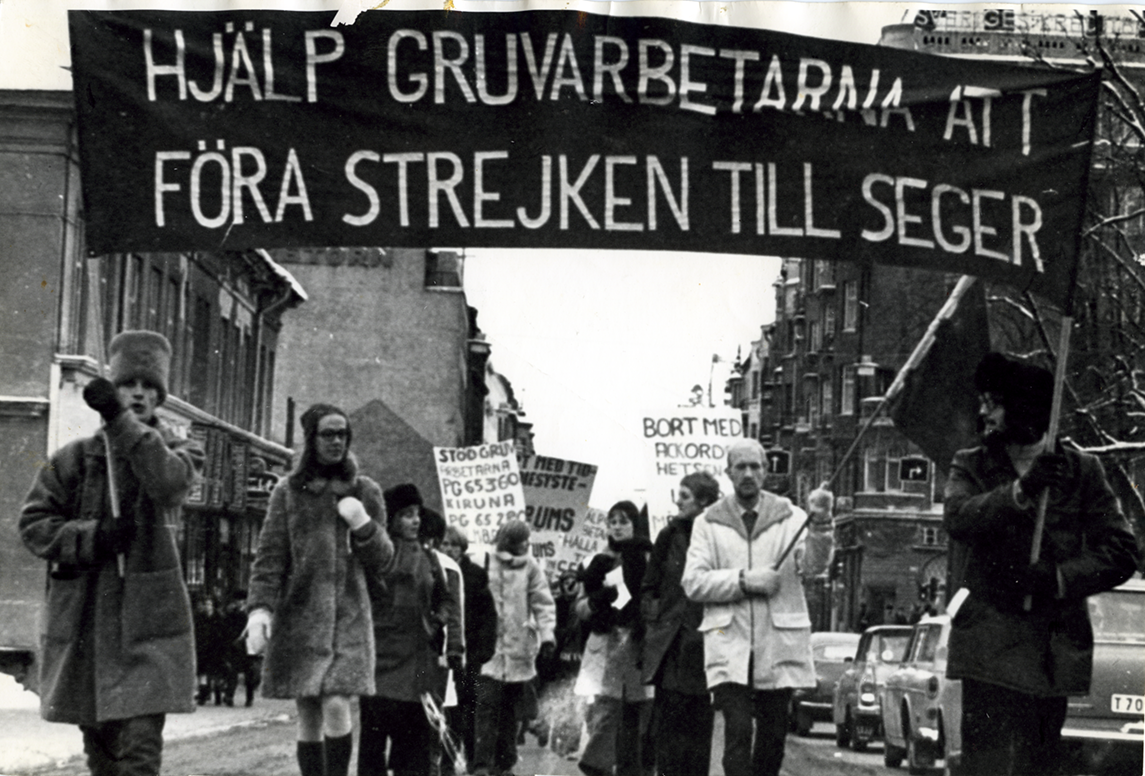
Concessions
But eventually, the committee yielded and invited Nordgren to their meeting on 19 January as an “observer”. Two days later, another concession was made by accepting Stendalen as leader of the delegation (instead of Rantatalo, who had been supported by the strike meetings thus far). The same day, minister Wickman announced that LKAB would leave the Swedish Employers’ Association later that year.
Now, the company management as well as both the trade union confederation and the mine workers’ union had gotten what they wanted. And on 26 January, “dialogues” (as envoy Lundberg preferred to call them) began between LKAB and the delegation. Only three days later, LKAB promised that both UMS and the re-evaluation factor would be removed, that a small group of employees might be offered a monthly salary and that they could consider even more generous offers in the coming wage negotiations! Of course, all of this was a great help when the confederation’s Kurt Nordgren again started appealing for a return to work. That, however, was to be decided at the union meeting in Kiruna and Malmberget. The results from the voting in Kiruna on 31 January were not to be revealed until the day after, after Malmberget had their vote. Even though Nordgren spoke in favour of a return at both meetings, the combined results were 1,620 in favour of continuing the strike, 1,552 for a return to work and 7 invalid votes.
Now, the union representatives started arguing that there should also be a vote within the committee, since there had been such a small majority in favour of continuing the strike: 60 more in Kiruna and only 8 more in Malmberget. They put forward a proposal to call on the strikers to return to work. The vote ended 12–12. Rantatalo got the final say by also voting for a return.
Fiasco
But the appeal for a return to work on Monday 2 February was a complete failure. In Svappavaara, only some 20 workers went back to work, in Malmberget 160 and in Kiruna about 100. Doubts arose whether the correct decision had been made. The old 21-man committee met on 2 February and unanimously decided to withdraw the recommendation to return to work, after which the union representatives threatened to completely break with the strike committee. Nordgren explained in a radio broadcast that, from his point of view, his work had been completely in vain. However, the call to continue the strike was followed almost 100 percent. But the risk of a definite split, due to the threat from the union board to completely take over the negotiations, made the strike committee unanimously recommend a return to work. The next day the strikers returned to work.
After the end of the strike, a period of negotiations followed. On 12 March the company put forward a final offer: the so-called “Package”. The offer included, among other things, that the “salary-pot” (the sum from which wage raises are granted) would be increased to about 15 million, which was 17 million lower than the original demand and 6 million less than the delegation’s latest bid. The vote on the offer was carried out in the union branch expeditions, and the result was 2,397 votes in favor of the Package and 983 against. On 31 March, the delegation signed the Package. Negotiations were resumed in June, and it was only on 29 September that the final agreement was signed – by everyone except Elof Luspa and Harry Isaksson.
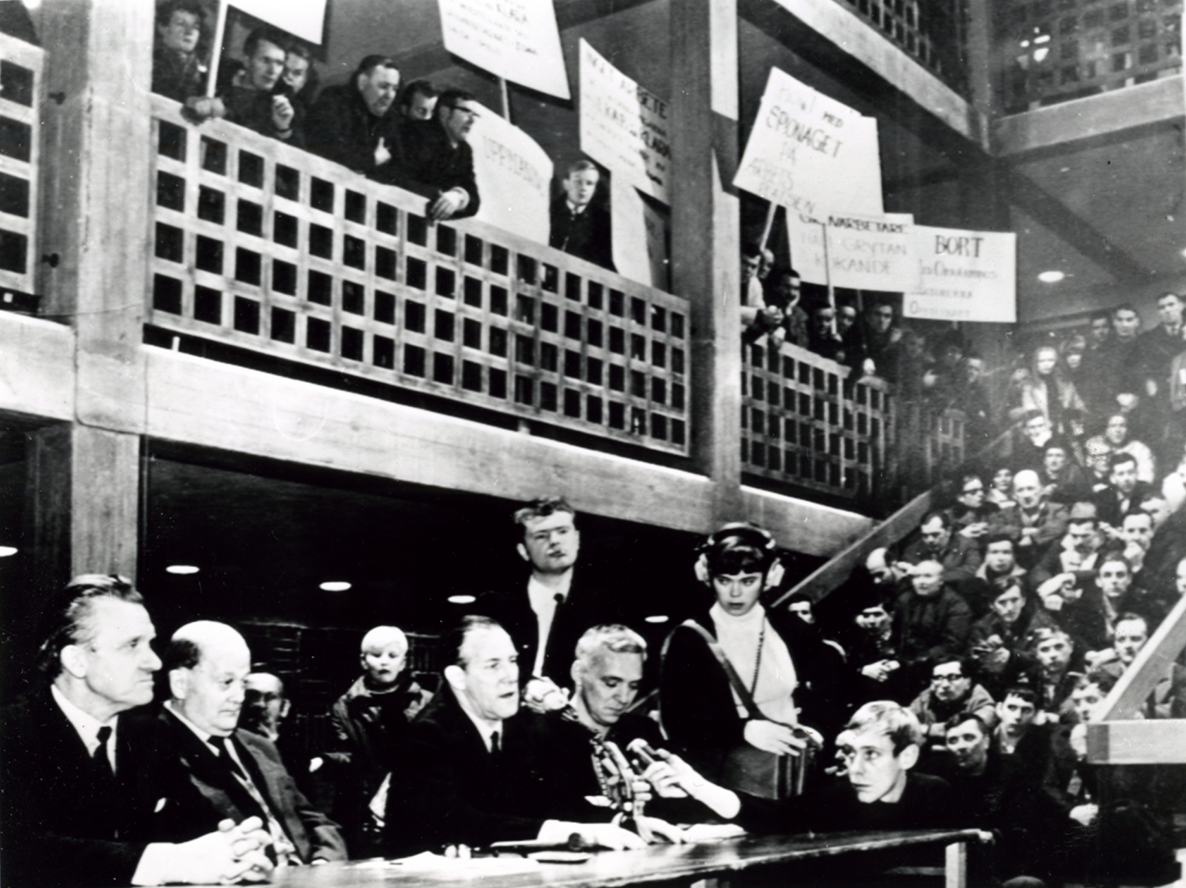
Not a failure
In an interview from 1982 Elof Luspa explains:
“The strike was not a failure. It was perhaps a setback for us miners, but it was a great victory for other workers. It showed that the only thing that works in the Swedish system are the strikes. Those ‘collaboration-strikes’ that the confederation does aren’t really strikes. They are just big and convoluted frauds. 1969 was a crucial year for Social Democratic parliamentarianism. They were going to inform the whole working class of Europe that in Sweden that we have an absolutely waterproof system where the problems are solved in mutual agreement, without strikes. But the miners went on strike and dispelled the Swedish miracle.”
In the same book, Harry Isaksson puts it this way:
“I don’t think the result could have been much different, because the conditions were not there. Had we been more politically conscious, things would have been different. The most important thing with these kinds of strikes are that they bring forth new ideas. People that you have known your whole life and considered as shits, become the most militant people you know. Others who have gone around waving red banners turns out to be rubbish – they are well read and next to useless. The most valuable guys during a conflict are the deviants. Radical ideas are latent in people, but they will not come to the surface as long as you follow the patterns that society and the union have built up. They are constructed to push some people away and nudge others forward.”
Elof Luspa was however “disappointed that there wasn’t sufficient exposure of who it was that broke the strike – the trade unions and their six representatives”. And he makes a perhaps unexpected comment: “Certainly there were real Communists helping, but it was the ‘communists’ among the union representatives that crushed the strike, not the Social Democrats”!
Herein lies the key to how the strike could have become a real victory, not only for the miners but for the entire Swedish working class. If there had been a genuine Marxist leadership of the strike, then all initiatives for sympathy strikes would have been encouraged! A proposal for a 24-hour general strike would have received a massive response, throughout the country, and even internationally.
The overwhelming majority in Kiruna and Malmberget supported the strikes. An extended struggle could even have led the miners to take control over the production and management of the company, that is, a real “socialisation” of LKAB.
The leadership of the strike was put under intense pressure from both the bourgeoisie and the media – but also from their “representatives” in the trade union confederation and the mine workers’ union (behind the scenes also the social democratic government). Locally, both the social democratic reformists and the Communist Party Stalinists acted to limit the strike. They never managed to break the spirit of the miners – but they managed to break the unity within the strike committee itself. According to Elof Luspa it was the local Communist Party members who “broke the strike” – not the Social Democrats!
An early mistake by the strike committee, which they realized later, was that they declined the offer of a sympathy strike by the workers at LKAB’s ore shipping in Narvik. It was from there most of the ore exports were shipped. This would have been very important, especially towards the end of the strike as the stores started to run out.
Class solidarity
The miners’ strike gave other parts of the Swedish working class a new confidence in their own strength. During the 1970s, there was a wave of wildcat strikes among metal workers, forestry workers, and more. There were also political consequences. The Social Democrats and the trade union confederation increasingly started to talk about “workplace democracy” and “economic democracy”. Both the “Codetermination Act” (Medbestämmandelagen) and the decision on “wage-earner funds” (löntagarfonder) were a result of the miners’ strike and the new labour struggle.
But while turning left in the rhetoric and giving workers some concessions, they also tightened legislation against “illegal” strikes and increased the associated fines greatly. The bourgeoisie and the trade union confederation bureaucracy hoped that this would discourage workers from engaging in similar battles in the future. Struggling against the restriction of democracy within the confederation, the more militant Dockworkers’ Union was formed in 1972. Again in 2019, in an attempt to crush them and prevent the emergence of more militant unions, the Social Democrats and the trade union confederation LO were instrumental in restricting the right to strike, but in practice this will be used against more than just dockworkers.
Does this mean that those struggling within trade unions should “set the union aside”, like the sects were shouting at the time? Of course not. In some periods of mass struggle, there will of course emerge new decision-making structures depending on the concrete situation. But today, the task is to carry out the struggle where we are: to challenge the union bureaucracy, and not least its extension in the form of careerists that you will find even in smaller workplaces. The class fighters of today must take on the task of transforming the union into a fighting organisation that puts its members’ interests first.
The miners’ struggle created a sense of class solidarity that allowed the workers to endure as long as they did, despite all attempts by union representatives to break the strike. An example of this was when the workers in Svappavaara on 20 December rejected a good offer made to them separately, because they understood that it was intended to divide them from their comrades in Kiruna and Malmberget.
During the 1960s, it was very common among “radical intellectuals” to discard the working class as a force capable of changing society. Instead, the role of the “intellectuals” was emphasised. This was also common among some “socialists” who felt that the working class had been “bourgeoisified” and that it was not prepared to fight to change society. How wrong they were!
The revolution in France 1968 was not only a shock to the bourgeoisie. It was also a point of reference for the workers’ representatives in the trade unions and in the working-class movements political parties – including the Swedish Communist Party – who had stopped believing that the working class was a force that could change their own living conditions and society. They didn’t understand (and perhaps they didn’t want to understand) the underlying processes within the working class. The contradictions sooner or later had to break out into open, militant struggle. Unfortunately, this distrust of the working class’ will to fight was also expressed within the leadership of the strike.
A brief personal reflection
I happened to be in the office of the mine workers’ union in Malmberget on the day that the strike broke out in Svappavaara. A member of the branch leadership, who also was an active member of the Communist Party, was very upset when he heard of the strike: “But they’re striking against us! We must immediately reach out on the miners’ radio and lay down the rules!”
I was at the time a young Social Democrat moving towards the left, like many other young Social Democrats at the time. But I definitely didn’t feel any sympathy for these so-called “Communists”. In the trade union work, there was no crucial difference between them and the leading Social Democrats in the regional leaderships. They had no faith in their members, the workers they were elected to represent.
The most important result of the strike was probably that the workers became aware of their own strength. Workers who had not previously been active stood up at meetings and spoke about their experiences and gave their views on the company and the social development. This is how new political mass alternatives can be formed – as a part of the struggle.
Elof Luspa explained that, after the strike, he “wanted to build a political organisation where the most important thing was the independent workers’ struggle and criticism of parliamentarism” – a truly revolutionary task. Just like before the miners’ strike, we’ve had a period of low activity in the class struggle in Sweden. But now we’ve entered a period of a deeper crisis, not only for capitalism, but also of Social Democracy and reformism, which no longer delivers improvements for the working class – on the contrary! And we will experience new periods of intensive, militant mass-struggle, because nothing can break the will of the working class to change society.

